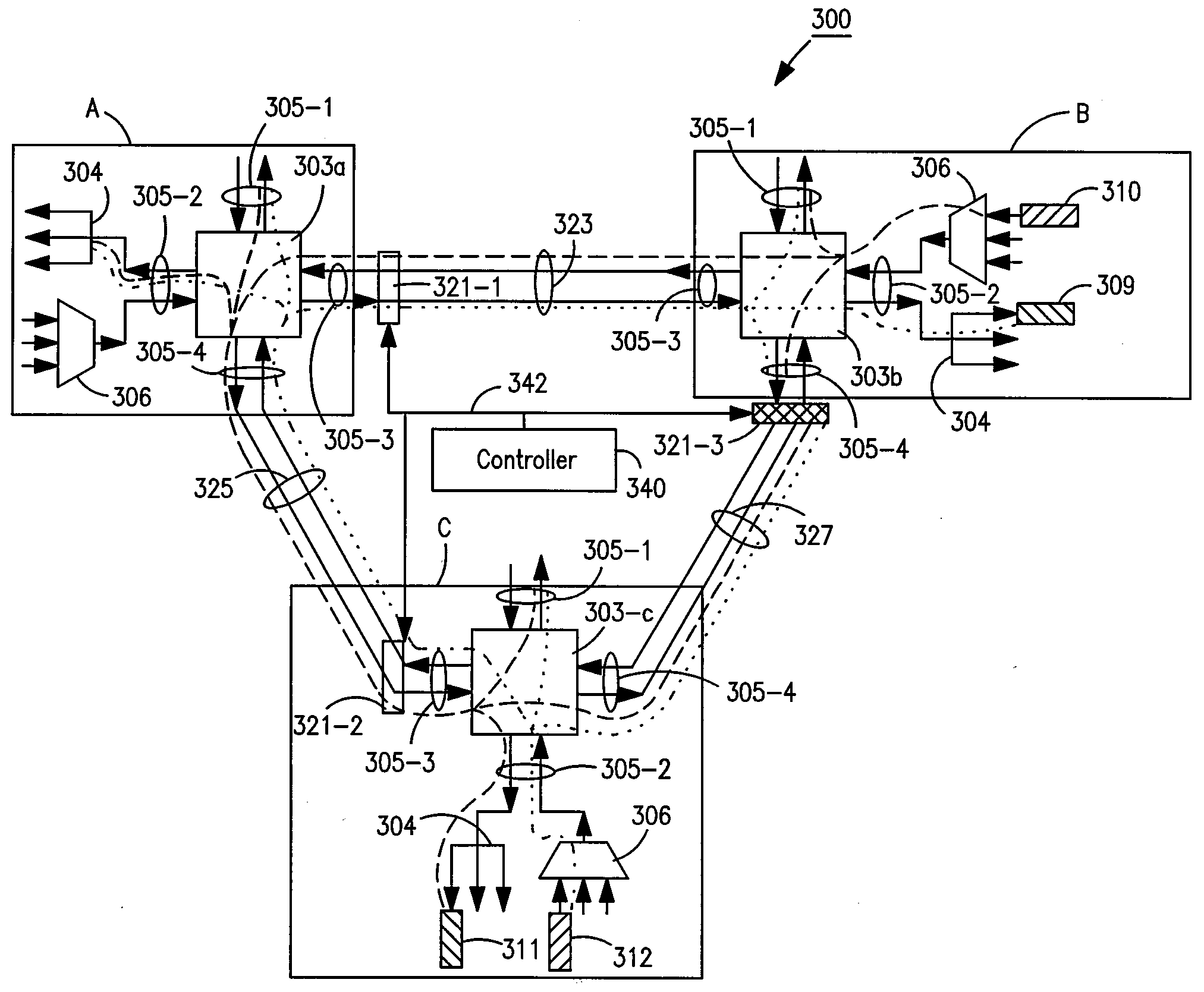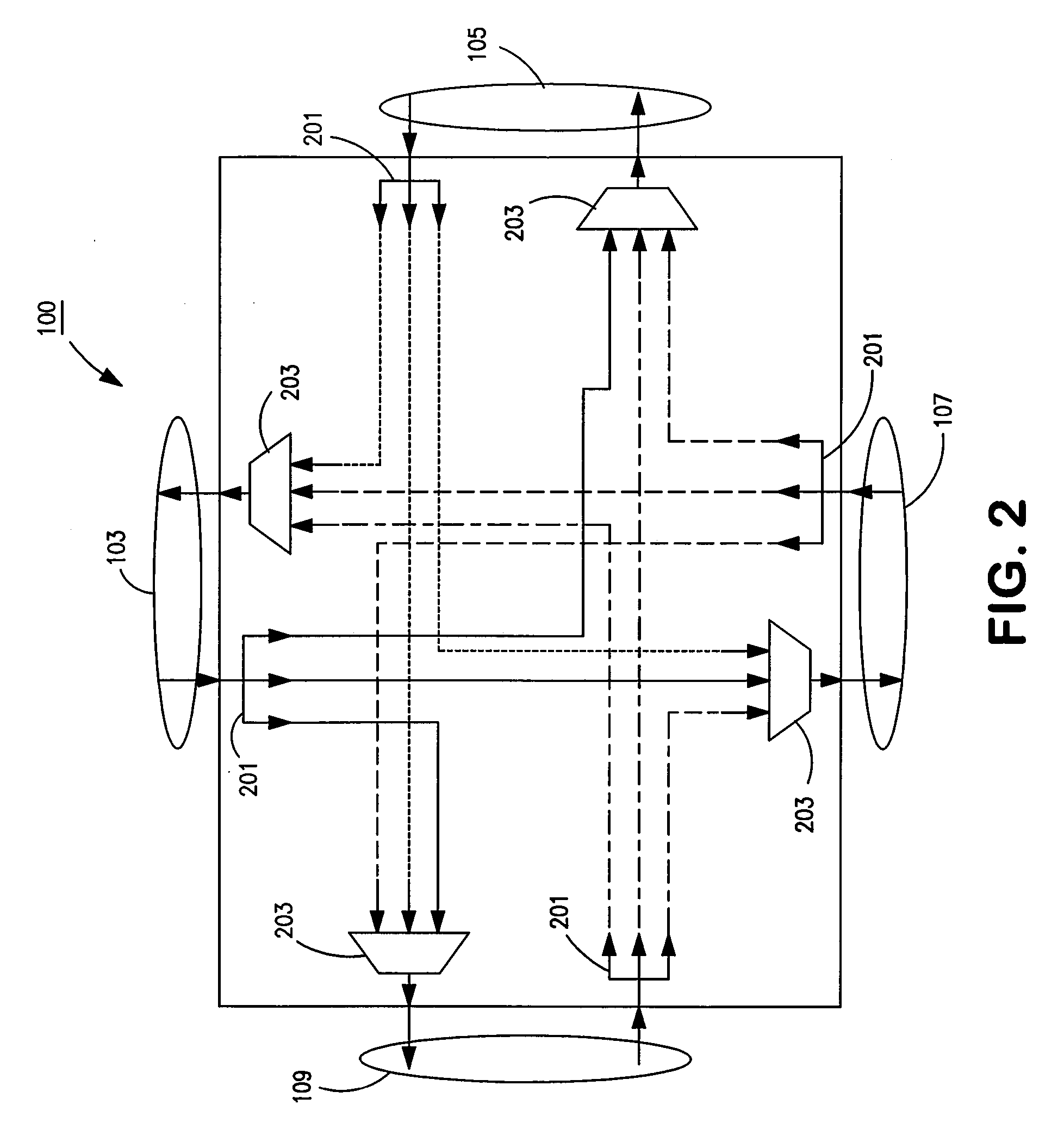Optical routing device and optical network using same
a routing device and optical network technology, applied in the field of optical networks, can solve the problems of difficult network modification, high cost, and the likelihood of increasing the density of wavelengths on which different data signals may be transported
- Summary
- Abstract
- Description
- Claims
- Application Information
AI Technical Summary
Benefits of technology
Problems solved by technology
Method used
Image
Examples
Embodiment Construction
)
[0017]FIG. 1 is a functional diagram illustrating the basic building block that may be used in accordance with this disclosure to build optical networks at low cost and with minimal design requirements. The element 100 is herein termed an optical multicast element. The optical multicast element 100 comprises a plurality of ports. In this example, the element has four ports 103, 105, 107, 109. However, this is merely exemplary and the element can have any number of ports. Each port is an input / output port. The optical multicast element 100 can accept an input signal at any port and will output that signal at each of the other ports. Thus, an input signal at port 105 is split and provided to each of the other output ports 103, 107, and 109. No portion of the signal returns to the same port.
[0018]While not shown in order not to unnecessarily obfuscate FIG. 1, a second input signal may be provided at port 103, which would be output at ports 105, 107, and 109, a third input signal may b...
PUM
 Login to View More
Login to View More Abstract
Description
Claims
Application Information
 Login to View More
Login to View More - R&D
- Intellectual Property
- Life Sciences
- Materials
- Tech Scout
- Unparalleled Data Quality
- Higher Quality Content
- 60% Fewer Hallucinations
Browse by: Latest US Patents, China's latest patents, Technical Efficacy Thesaurus, Application Domain, Technology Topic, Popular Technical Reports.
© 2025 PatSnap. All rights reserved.Legal|Privacy policy|Modern Slavery Act Transparency Statement|Sitemap|About US| Contact US: help@patsnap.com



